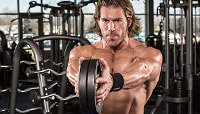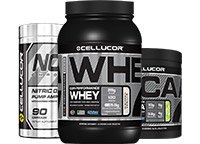
12 Laws Of Elite Chest Training
Rip through T-shirts with the help of IFBB physique pro Craig Capurso's 12 best chest-day tips—and his favorite chest exercise. This is where your best-ever upper body starts!
We are a nation of laws. Break them and you go to jail—at least if you get caught. But if you break the law in bodybuilding, you'll find yourself locked up in a body that never seems to change. Even worse, you may suffer an injury that keeps you out of the gym entirely.
You and your chest deserve better! That's why we consulted with the dean of Cellucor-sponsored athletes, Craig Capurso, to compile 12 of the very best chest-day tips. They're so important, we've even labeled them as "laws." Break them at your own risk.
Move weight, then isolate
What's the best chest exercise? It can vary from person to person and year to year. But once you know which is your big-buck press, don't hide it deep in your workout. Hit it first, and hit it hard.
"The best approach on chest day starts with multijoint presses, and/or the Hammer machine press," says Craig. "Multijoint bench press variations are your best moves to start your workout because they allow you to use the most weight, when your energy levels are highest early in your workout."
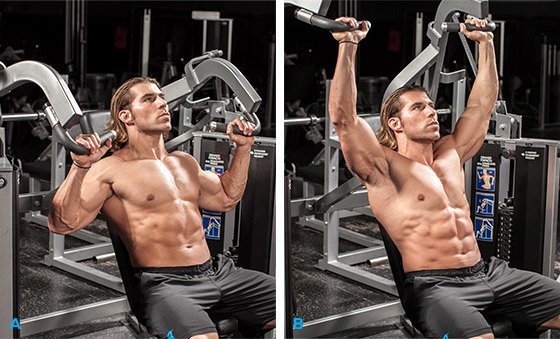
Only after he finishes his presses does Craig move to single-joint isolation chest exercises. "I switch gears from a press to a [single-joint] fly to stretch and open up my chest," he says. "This helps elongate the muscles and gets more oxygen and blood back in."
Break law #1 every once in a while
Feeling like you're in a chest-training rut? Craig recommends flip-flopping your single-joint and multijoint movements on occasion to spur new muscle growth. Sure, you won't set any PRs on the bench when you perform what's known as the pre-exhaust technique, but you'll create next-day soreness like you've never felt before.
With your pecs fresh at the beginning of your workout, you'll be able to use more weight than normal on your fly movements. However, resist the temptation to go very heavy for low reps; these single-joint movements can put more stress on the joints. Aim for a fairly high rep range of no fewer than eight.
Don't always start on the same bench
The "flat bench first" mentality ensures that bodybuilders always hit inclines and declines later in the workout, when their energy levels are sapped. Over time, these areas can begin to lag.
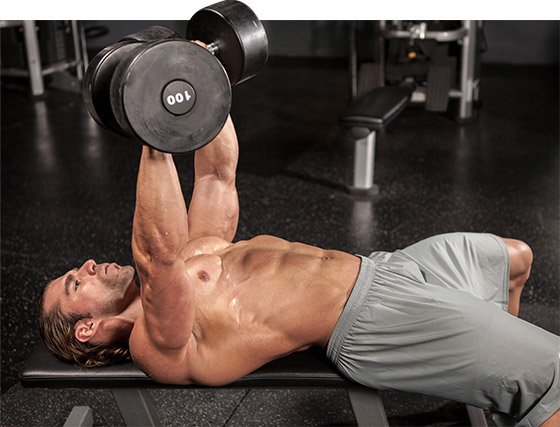
Craig offers that rotating which bench you start your chest workout with every few weeks will allow you to develop better overall size, and reduce the chances you'll develop a weak area in your pecs. "I'm a Libra; I have to keep balance. So I always rotate," he jokes.
Remember the basics of growth
Recognize that what you do is far more important than how you do it. Focus on these well-established variables that have been proven to maximize muscle size for all muscle groups:
-
Go high volume. After a few warm-up sets (never taken to muscle failure), do 3-4 working sets of several exercises from different angles, primarily multijoint movements.
-
Take it to muscle failure. If you end a set but could've done more reps on your own, then you might be shortchanging your growth.
-
Choose the right resistance. During your working sets, choose a weight you can handle for 8-12 reps to failure with good form.
-
Challenge yourself. Once you can do more than about 12 reps, add weight instead of simply adding more reps.
Swell your chest
Whether you're doing presses or flyes, retract your shoulder blades and billow your chest like a big rooster. This overexaggerates the curve in your thoracic spine, giving you a better foundation to generate force through your pecs while stabilizing and protecting your shoulders.
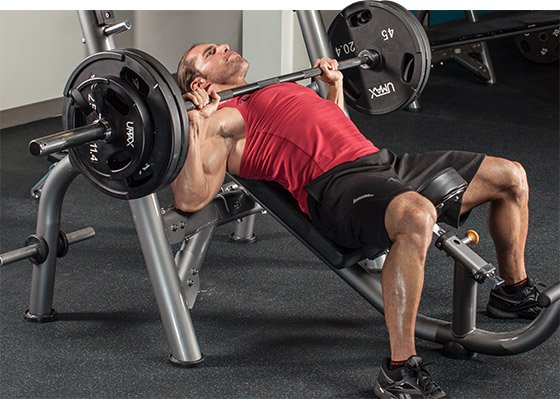
Alternate grip widths on presses
Plenty of ink has been spilled trying to find the "perfect" grip width when pressing a barbell. Craig believes no grip is sacred, and that hand placement should move in and out.
"When you change your hand position, you alter the point to which your elbows travel. When you have your hands closer and elbows tucked [by your sides when you lower the weight], you emphasize the inner chest and triceps. With a wider grip you focus more on the outer pecs and shoulders."
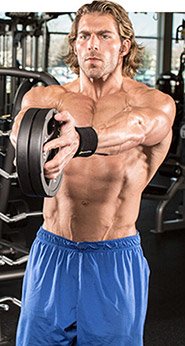
You don't have to reposition your hands every set, but occasionally working with a slightly closer or wider grip can give you better overall chest development.
Don't let the delts take over
There are all sorts of mistakes bodybuilders make on chest day, but Craig contends that the biggest faux pas is too heavily engaging the delts.
The delts are a weaker muscle group than the pecs, so if they fail first, you could be forced to end your set before the chest muscles are fully fatigued.
What are the biggest causes?
An overemphasis on front-delt moves, using incline benches that are too steep, and taking an inordinately wide grip on a barbell, says Craig.
Think beyond flat/incline/decline
A bench is a bench is a bench, you might say. But if you're always hitting your upper chest from the same three angles, you're missing out on a multitude of in-between angles that target the pecs just slightly differently.
"A flat bench is never a flat bench if I can help it," offers Craig. "I oftentimes use one click up from the bottom of the flat bench [of an adjustable bench], because I feel it puts a better stress on the muscle I'm working."
Don't press your flyes
When performing chest isolation moves such as flyes and cable crossovers, the elbows are kept in the same slightly bent position for the duration of the set—or at least, they should be! Many beginners start to bend and extend the elbows as they get tired, making the single-joint flyes become multijoint presses—and losing their ability to isolate the target area.
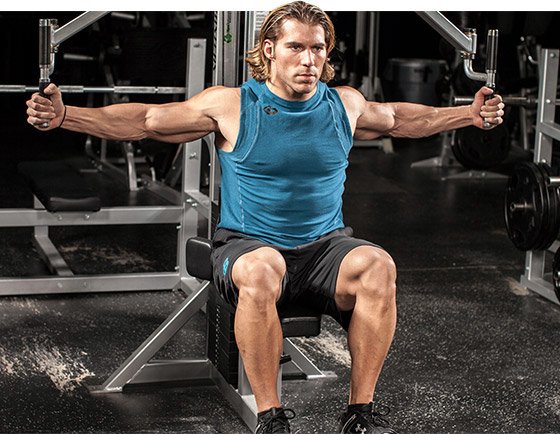
If you're having trouble maintaining the slight bend in your elbows, jump over to the pec deck machine, which locks your arms in position.
Play around with reps, get strict about rest
The "3 sets of 10" formula has laid the foundation for many great chests, but every perfect recipe benefits from a little extra spice now and then. When you're in need of an intensity boost, Craig offers this approach: "Try zig-zagging your reps, alternating high-rep sets of 15-20 with low-rep sets of 4-6. Dropsets are another way to increase intensity; after you reach muscle failure, immediately reduce the weight by about 25 percent and continue on to a second point of muscle failure."
Craig also recommends you try timing your rest periods to reduce gym downtime and increase the intensity of your workout. Combine it with zig-zag reps, and you'll wake up those deep chest fibers in no time.
Think beyond "chest day"
If your chest isn't where you want it to be, smashing it once a week while eating like a bird isn't the solution. "Anytime you're training a weak point, you want to treat that muscle like you would when you're bulking," says Craig. "That means calories should be more than maintenance to give the muscles more fuel to grow. And if your chest is a weakness, you should be hitting it multiple times a week."
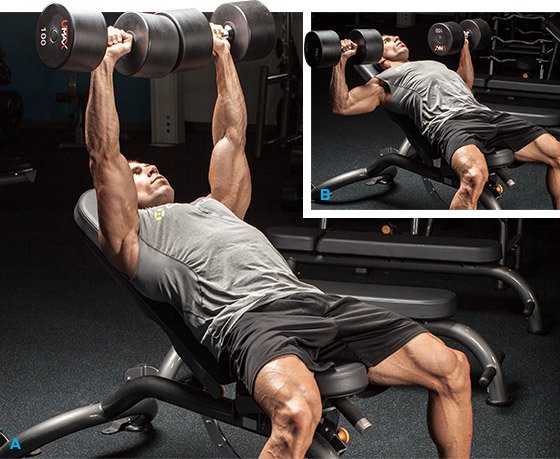
Train smart with dumbbells
Dying to know Craig's take on the best chest exercise? Here you go. While everyone else starts their chest day scrambling to find some plates, this IFBB pro walks calmly over to the dumbbell rack, not loading up a barbell.
"Dumbbell bench presses are the most valuable because there are so many different ways you can utilize them" he says. "Using dumbbells allows for a longer range of motion, meaning more muscle recruitment, and they demand a greater degree of core stability."
Of course you can't follow all of these laws every chest day. We get that! But over the course of, say, 12 weeks, they can help you turn "I'm not quite there" into "Dude, what do you do?" When this happens, perform your civic duty and send them this article.
Recommended For You
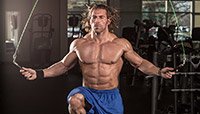
3 Fast Fat-Loss Workouts
Move over, hour-long treadmill runs! Make room for some fun, high-intensity fat-burning workouts from 3 inspiring Cellucor athletes. Burn extra body fat without burning tons of time in the gym!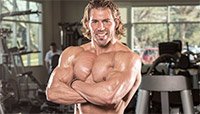
30 Days Out: Craig Capurso's Extreme Cut Trainer
30 Days Out is Craig Capurso's personal one-month cutting program. It's a combination of intense training techniques and precision nutrition, and it's guaranteed to get you shredded.